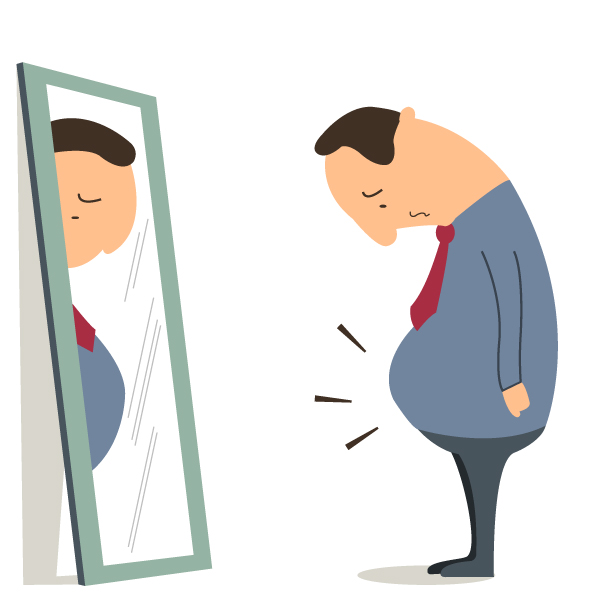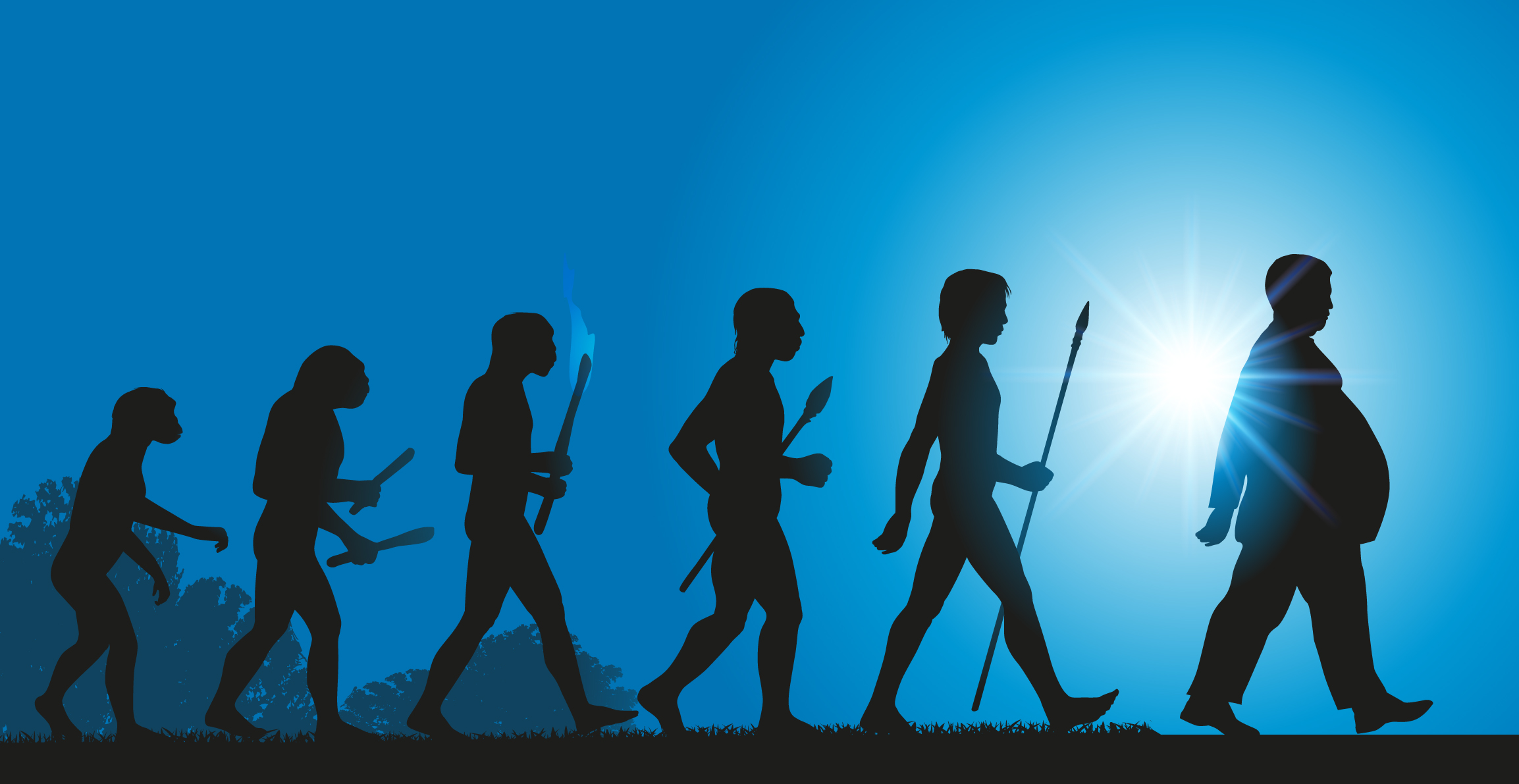“In history, a great volume is unrolled for our instruction, drawing the materials of future wisdom from the past errors and infirmities of mankind.” – Edmund Burke

ANCIENT HISTORY
As a whole, humans have experienced chronic food shortage and malnutrition since the dawn of time.1 Delve back to the Paleolithic period and there’s no skeletal evidence of overweight humans. Hunter-gatherers were most likely thin, like the current last remaining hunter-gatherers – the few indigenous peoples across the globe still living as their tribal ancestors have. Take the Kalahari Bushmen in Africa, for example, these persistence hunters may chase prey 2-5 hours until the target animal is exhausted enough for the hunter to spear it by hand! Needless to say, they were likely not overweight.
Enter the Neolithic era approximately 10,000 years ago in the aftermath of the last the ice age; its advent of agriculture and animal domestication systems are but two examples of human adaptations over thousands of years to which we can attribute our survival. The convenience of centralizing food procurement in such a way was a logical answer to the growth of human population whilst wild game dwindled and foraging grew impractical.2 The concentrated production of crops and edible animals saved us from the very real threat of starvation that existed. Historically, farming and agriculture were physically demanding ventures with energy costs comparable to, and in some cases exceeding, that of foraging.2 Thus, normal weight or underweight was the norm and obesity was rare.
Rachel Laudan, a noted food historian and author at the University of Texas at Austin, gave us her insight that “there’s evidence that there always was a propensity toward obesity among the wealthy in any society.” Some wealthy, high-status individuals in ancient Greece, Byzantine, Greco-Roman regions and elsewhere were obese for their time.2 Laudan explained that “overweight was viewed as a status symbol.” For most of history, humans faced a scarcity of food which led to the belief that being fat was good and in fact, desirable.1
Humans have long adapted to the natural environments in which they lived. Thus, agriculture was not the same everywhere and diets varied widely depending on geography.3 But in general, farming did allow the consumption of larger amounts of grain, milk, and domesticated meat.3 This shift in dietary patterns over thousands of years across the globe resulted in at least one evolutionary change — our ability to digest milk past weaning,3 attributable to milk consumption by our adult agricultural ancestors.

MODERN HISTORY
Welcome to the Industrial Age which began just over 200 years ago. With machinery, harnessed power, and train transportation of goods in the late 19th-century, the streamlined industrialization of food started to make basic subsistence relatively effortless for more and more people.2 As food systems delivered so much food to so many people at such a low cost3, populations largely went from subsistence to abundance in terms of food availability.
Food security around the time of World War I was such a primary concern that it drew then-US President Woodrow Wilson to direct the Secretary of Agriculture to expand production of the staple food crops beyond what was needed for American use. “There is no danger of overproduction.” – David F Houston, US Secretary of Agriculture c.1917
Not only did the volume of food change, but refined whole grains and sugar became available. Previously, the only type of long-term food storage was drying or dehydration. Increased stores of food by advanced preservation methods such as pickling, fermenting, curing and canning and by cold storage in ice houses, cellars and modern refrigeration brought us more access to food off-season.
These advances in improved public health and the amount, quality, and variety of food initially resulted in increased longevity and body size.1 Unfortunately, abandoning a traditional agricultural lifestyle may have triggered our fat-storing genes to kick in. Up until now, people that stored fat the most were probably the evolutionarily best suited to survive. Our genotype adapted for times of feast or famine are now probably causing problems due to the excessive amounts of carbohydrates typically eaten3. Essentially, our ability to store body fat became maladaptive when technological advances altered the balance between the availability of food and energy expenditure.1
It seems a shift in food intake and physical output has caused our modern malady of obesity and its pathologic consequences of hypertension, heart disease, and diabetes. Only a couple hundred years ago, obesity meant having enough money to buy and consume all that you want and was a sign of wealth and prosperity (see first highlight). Morbid obesity was relatively unheard of. The effect since World War II has been an overabundance of easily accessible food, coupled with reduced physical activity, that accounts for the recent increased prevalence of obesity.1 Industrialization first brought an abundance of high-density foods, then the 20th-century food industry’s manufacturing allowed for more processed convenience foods. Double whammy!
To avoid obesity, one must maintain balance between food consumption and energy expenditure. The effort to procure food (or in other daily living activities) must match the energy derived from it.

References:
- A History of Obesity, or How What Was Good Became Ugly and Then Bad. Garabed Eknoyan. Advances in Chronic Kidney Disease, Vol 13, No 4 (October), 2006: pp 421-427
- The fattest ape: An evolutionary tale of human obesity. Jesse Bering. Scientific American November 2, 2010
- Evolutionary Eating — What We Can Learn From Our Primitive Past. Juliann Schaeffer.
Today’s Dietitian 2009, 11, No. 4, P. 36
Recommended Reading

Nutritious Green Foods You Didn’t Know About
Good nutrition is all about variety! Browse through our list of unusual fruits and veggies and give yourself a chance to try something new.

Salt Grains for Muscle Gains?
Does liberally salting your food help you pump more iron in the gym? Registered Dietitian, Debbie James, investigates the claims!

How Much Protein Does Your Body Need?
One frequently asked question is about the recommended intake of protein. We hear you! Here is everything you need to know.
